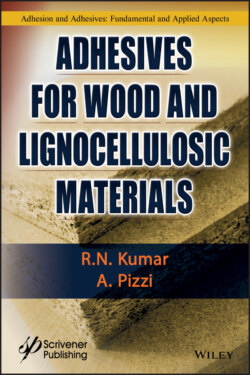Читать книгу Adhesives for Wood and Lignocellulosic Materials - R. N. Kumar - Страница 46
2.3.1 Specific Adhesion
ОглавлениеSpecific adhesion involves the bond created by chemical means, rather than mechanical, as a result of the molecular attraction between the surfaces in contact. This can be ionic, covalent, or induced by any other intermolecular forces (Figure 2.1), as described below:
Figure 2.1 Potential energy diagram for different forces [4].
(a) Coulombic (ionic) or hydrogen bonding
Hydrogen bonds occur in molecules that have H–F, H–O, and H–N bonds. Basically, this strong intermolecular force is due to strong dipole–dipole forces.
Besides the above, there can exist non-covalent and non-electrostatic interactions (apolar interactions) between neutral atoms and molecules [2, 3]. However, they are not as strong as Coulombic (ionic) or hydrogen-bond interactions. They are ubiquitous and are always attractive between like particles.
(b) Apolar interactions
There are three types of intermolecular forces that occur in chemical compounds. These forces cause molecules or groups of molecules to be attracted to one another, thus affecting many of their properties. Collectively known as the van der Waals forces, these electrodynamic intermolecular forces originated from three distinct interactions. These are (a) Keesom (permanent–permanent dipoles) interaction (b) Debye (permanent-induced dipoles) force, and (c) London dispersion force (fluctuating dipole-induced dipole interaction) [2]. While these three kinds of interactions have distinct origins, they have in common the fact that their interaction energies decay rapidly with the sixth power of the interatomic or molecular distance. See Sections 2.3.1.1 to 2.3.1.3.
The London dispersion force is the weakest, followed in increasing strength by dipole–dipole forces and then hydrogen bonding. Lewis acid–base interactions can also occur (discussed later) [3].
The mathematical relationships for the various potential energies are given below:
